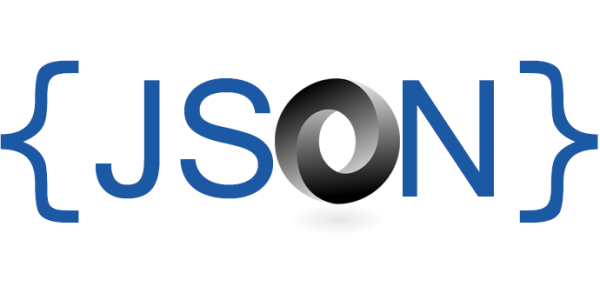What is the JSON data format and JSON document database?
- The Tech Platform

- Feb 26, 2021
- 3 min read
Updated: Aug 1, 2023
You might have come across JSON before, but like many, you might be unsure of its meaning. JSON stands for JavaScript Object Notation, and what makes it remarkable is that it can be understood by both humans and machines, a quality not found in many data formats.
This article will delve into the concept of JSON and its significance in the world of data interchange. Additionally, we will explore the realm of JSON document databases, complemented by practical examples to enhance our understanding.
What is JSON?
JSON, which stands for JavaScript Object Notation, is a lightweight and widely used data interchange format. It is designed to be easy for humans to read and write and straightforward for machines to parse and generate. JSON is commonly used for data exchange between web servers and web clients, as well as for storing configuration data, transmitting API responses, and other data-related tasks in modern computing.
Features and Advantages of JSON:
JSON's straightforward syntax enables developers to work with it easily, leading to reduced development time and improved code readability.
JSON data, resembling JavaScript object notation with key-value pairs and arrays, offers human-readable data representation, simplifying data reading and writing tasks.
JSON's compact format results in smaller data payloads during network transmission, making it highly efficient for data transfer in web applications.
Being language-independent, JSON can be seamlessly utilized across various programming languages, making it a favored choice for multi-platform data exchange.
JSON supports a limited set of data types, such as strings, numbers, booleans, arrays, and objects, ensuring consistent data representation across different systems.
JSON's widespread support in modern programming languages and platforms allows for effortless parsing and conversion of JSON data to native data structures and vice versa.
JSON's ability to handle complex and nested data structures makes it an ideal choice for representing hierarchical relationships in data modeling.
Syntax of JSON
JSON data is represented using two primary structures: objects and arrays.
1. Objects
An object is defined by a set of key-value pairs enclosed in curly braces { }. Each key is a string, followed by a colon (:) and a value. Multiple key-value pairs are separated by commas (,).
Example of a JSON object:
{
"name": "John Peter",
"age": 30,
}2. Arrays
An array is an ordered list of values enclosed in square brackets [ ]. Values in an array can be strings, numbers, booleans, null, arrays, or other objects. Multiple values in an array are separated by commas (,).
Example of a JSON array:
{
"Cars": ["Ferrari", "Thar", "BMW"],
"Bikes": ["Ninja", "Hayabusa", "Benelli"]
}JSON data strictly adheres to the following syntax rules:
Data is represented in name/value pairs.
Names (keys) must be enclosed in double quotes (").
Values can be strings (also enclosed in double quotes), numbers, booleans, null, arrays, or objects.
Whitespace characters (spaces, tabs, line breaks) are allowed and ignored, except within strings.
What is a JSON Document Database?
Document-oriented databases are a class of NoSQL databases that store, manage, and retrieve data as JSON-like documents. Unlike traditional relational databases, which use tables with fixed schemas, document databases offer a flexible and schema-less approach to data storage. This flexibility is well-suited for applications that deal with constantly changing or evolving data structures.
In JSON document databases, data is organized into collections, each containing multiple JSON documents. Each document represents a specific data entity and can have its own unique structure, allowing for easy adaptation to changing business requirements. The document model aligns well with object-oriented programming, making it a natural choice for modern application development.
Popular JSON Document Databases in the Industry (e.g., MongoDB, Couchbase)
MongoDB and Couchbase are two prominent examples of JSON document databases that have gained widespread adoption.
MongoDB provides a highly scalable and high-performance solution for handling large volumes of JSON data.
Couchbase offers a distributed, memory-first architecture optimized for real-time applications.
Both databases have been embraced by various industries, ranging from e-commerce to IoT, for their ability to handle unstructured and rapidly changing data.
JSON Examples
Here are some of the JSON examples:
JSON String Example:
{
"name":"Rahul Roy",
"email":"Rahulroy@gmail.com",
"age":30,
"isSubscribed":true
}JSON Number Example:
{
"productID":12345,
"price":29.99,
"stockQuantity":1000
}JSON Array Example:
{
"fruits": ["Apple", "Banana", "Orange"],
"vegetables": ["Carrot", "Broccoli", "Spinach"]
}JSON Nested Object Example:
{
"employee": {
"firstName": "Alice",
"lastName": "Smith",
"department": "HR",
"isManager": false
},
"officeLocation": "New York",
"salary": 55000
}Conclusion
Understanding the JSON data format and its compatibility with document-oriented databases brings numerous advantages to modern data management. The flexibility, ease of use, and performance benefits of JSON document databases have made them an essential part of the data stack for many successful applications and use cases across diverse industries. As technology continues to evolve, JSON document databases are likely to remain at the forefront of data storage and exchange solutions, meeting the demands of the ever-changing data landscape.





Comments